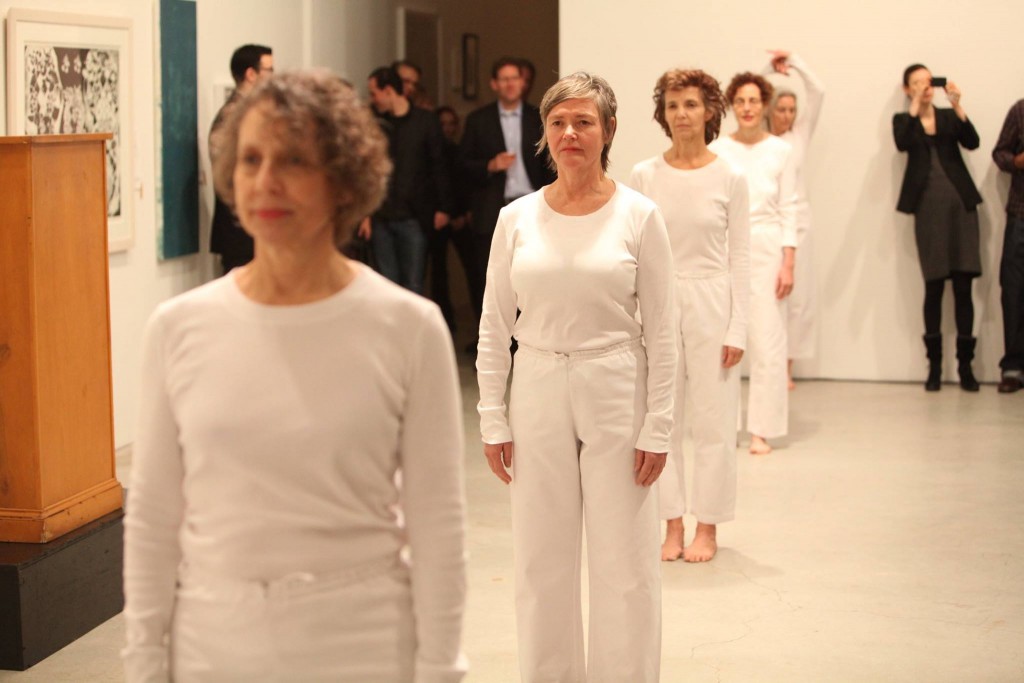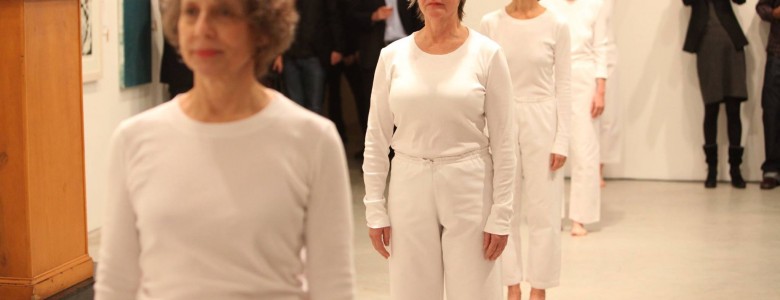“Working with Trisha Brown was like learning to bicycle: once a Trisha Brown dancer, always a Trisha Brown dancer. The dance, her dance, never leaves you completely—you can pick it up again and again.”

Iréne Hultman was a dancer for Trisha Brown Dance Company from 1983 to 1988. She was later a rehearsal director (2006–2009) and continues to teach for the company.
Q: What was your first encounter with Trisha Brown’s work?
Iréne Hultman: Elizabeth Garren and Mona Sultzman came to Stockholm, I believe in 1976, and taught Locus. I was in heaven—for me the experience was Butoh meeting time meeting movement meeting abstraction meeting emotion meeting instinct meeting the unknown—the downbeat, the architectural line, and the rhythm suited my senses. I also saw a Glacial Decoy rehearsal with Nina Lundborg and Lisa Kraus that blew my mind—again the visual rhythm where the abstract becomes narrative without being a defined story but more likened to a musical score. The kinetic experience while viewing was unescapable.
Q: What were rehearsals like? How did Trisha create work on the dancers? How did she talk about the work to you? What was the most challenging aspect to master? What was the most natural to connect to?
IH: Rehearsals were very focused whether there were much action or much repetition. It was a sense of time management: this is the actual time carved out for this research separated from the world outside. The most challenging and also intriguing for me was the constant repetition. And with that decipher the innate physical micro order of intent. For me Trisha’s physical rhythm was and is just marvelous to execute.
Q: How did Trisha talk about the work to you?
IH: The impetus she gave to us while I was there were mostly in images, adjectives, and/or actual directions. Since she was active as well you tended to pick up on her energy level or what you interpreted as “reason.” As a dancer you had to enhance, continue or add to what she had created—it was very welcoming in trying to find out, trying to expand, explore—and possibly fail. In the studio and onstage Trisha was exuberant, full of life and energy, easy to laugh and embrace life. Her being was very positively contagious.
Q: If you had one Trisha Brown dance to take with you to a desert isle what would it be and why?
IH: I have a hard time deciding between Glacial Decoy and Set and Reset. Glacial Decoy has a very joyous execution with surprise elements that requires a total commitment to direction and awareness. It directs itself outwards and inwards at the same time. I particular like the dialogue of the technical exuberance with the quotidian instances. It makes me happy to dance. Set and Reset is also a very joyous dance. The drive of direction and connections makes it an ongoing spill of movements. Dancing it you have a feeling of riding the wave. You can’t help but be happy dancing Set and Reset.
Q: How did Trisha’s dances evolve during your time with the company?
IH: Trisha’s investigation of the body never stopped. Her use of the body’s architecture and the architecture of the space seemed to be in constant investigation, including energetically and rhythmically. Her scores both became more complicated and layered and at the same time they had a direct simplicity about them. I would say during the time I danced with the company her artistic endeavors and interest became “bigger.” There was no surprise to me that when that opportunity presented itself, she was interested in opera.
Her evolution as a dance maker I think did go full circle. While experiencing her latest piece I’m going to toss my arms- if you catch them they’re yours (2011), it seemed that her movement vocabulary returned to a quotidian attitude. For me it was very reassuring, recognizable, and logical.
Q: What stays with you the most about Trisha’s work today?
IH: Working with Trisha Brown was like learning to bicycle: once a Trisha Brown dancer, always a Trisha Brown dancer. The dance, her dance, never leaves you completely—you can pick it up again and again. Her kinetic vocabulary is so natural and complicated, so logical and so impossible that it stays with you. Ideas and intention changes, concepts change, but the body is a body is a body. You learned to trust your instinct and mind as well as the body while working with Trisha Brown. There was always a listening attitude towards yourself—and others—that later carried over in my own investigation as a dance maker.
To say that any one thing has influenced me would be too simple. I am a product of Trisha Brown in a way: she—as a dance artist, as a woman—has inspired and influenced me. She still does.
Photo: Irene (2nd from left) with other former company dancers performing Spanish Dance.

